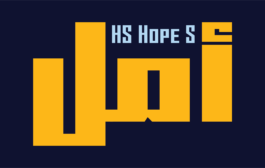تم تصميم الخط الطباعي DIN Seirf بشكل أساسي كخط متباين به إضافات عملية متميزة تميزه عن الخطوط الكلاسيكية المشابهة. فبنية الخط البسيطة أدت إلى سهولة تطوير الخط إلى نظيره العربي بعيداً عن الأساليب الخطية التقليدية، الأمر الذي أدى إلى إنتاج تصميم بسيط معاصر يمزج بين خصائص خط النسخ وخط الكوفي القديم. المحارف العربية لهذا الخط تحمل نفس صفات وأبعاد التصميم الأصلي الخاص بـ DIN Serif مثل: الانحناءات والتباينات مع الحرص على عدم تقليد منحنيات الكتابة اللاتينية بكاملها. في الواقع، فإن العديد من المحارف الأساسية تم كتابتها على الورق بعد كثير من التجارب باستخدام قلم البوص الخاص بالكتابة التقليدية، وهذا الأمر أدى إلى فهم بنية الحروف وإيقاعها البصري بشكل أعمق مما سهل تحويل أشكال الحروف إلى شكل رقمي ومن ثم تطبيق تعديلات إضافية. ومن الملاحظ أن الأجزاء السفلي لمحارف النسخة العربية من Din Serif قصيرة في لتتناسب مع نسب النسخة اللاتينية، بالتالي تم الحفاظ على التباين بين الأجزاء السميكة والرقيقة على الرغم من تعاكس ذلك بالنسبة للنسختين. وأخيراً تم تصميم المنحنيات بعناية فائقة لكي يتم حدوث التماثل ما بين النسخة العربية وأصلها. وبذلك حصلنا على الخط الطباعي Din Serif Arabic حديث، ونظيف، وموثوق به، ويتمتع بدرجة جيدة من سهولة القراءة الأمر الذي ينصح لاستخدام بشدة للصحف والمجلات وغيرها من المواد المطبوعة. هذا الإصدار أخذ بعين الاعتبار النسخة الجديدة من يونوكود، وهو يدعم العديد من اللغات مثل: الفارسية والطاجيكية، والكردية السورانية، والكردية الكرمانجية، الباشتو، البلوشي، الأردية والبنجابية والأذرية والكازاخية والتتار، أويغور وغيرها من اللغات. وعلاوة على ذلك، كل أنماط هذا الخط تتضمن العديد من الرموز العملية العربية والحروف الممتدة. وكل الأوزن من الوزن العادي إلى الأسود تم عمل التماثل له بدقة لكي يعطي أداءً ممتازاً في صفحات الويب.
DIN Serif was originally designed as a low contrast typeface with functional and distinct novelties which set it apart from most classic Romans. Its solid, simple and subtle serif nature directed the development of its Arabic counterpart away from the traditional calligraphic styles, towards a more simplified contemporary design mixing Naskh characteristics with early Kufi style. Its Arabic letterforms carry through the feel of the original design by using attributes of DIN Serif such as the tension and contrast without copying the curves of the Latin script in its entirety. In fact, several basic characters originated on paper after many tedious trials with a traditional calligraphic bamboo pen. This provided a deeper understanding of its structure and visual rhythm, before converting the letterforms into a digital form and applying additional adjustments. The descenders of DIN Serif Arabic are short to match the proportions of the Latin version. The contrast between the thick and thin is maintained although inverted. Finally, it has carefully designed open counters that match the color of the original. DIN Serif Arabic is fresh, clean, reliable and quite legible. Therefore, it is highly recommended for newspapers, magazines and other printed matter.
This version takes into consideration the new Unicode standard and supports additional languages such as Persian, Tajik, Kurdish Sorani, Kurdish Kirmanji, Pashtu, Baluchi, Urdu, Punjabi, Azeri, Kazakh, Tatar, Uighur.
Furthermore, each font style includes several Arabic practical symbols as well as swashes. All weights from Regular to Extra Black were meticulously hinted for excellent display performance on the web.
DIN Serif® Arabic
Copyright© 2017
Designer: Panos Vassiliou / Hasan Abu Afash
https://parachutefonts.com/typeface/DIN-Serif-Arabic
















































